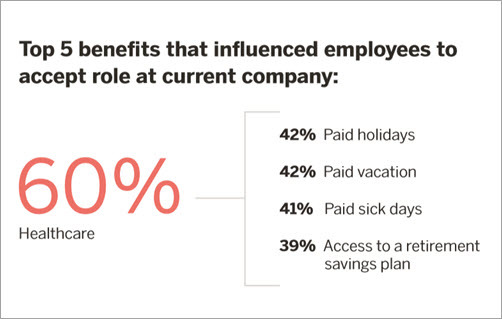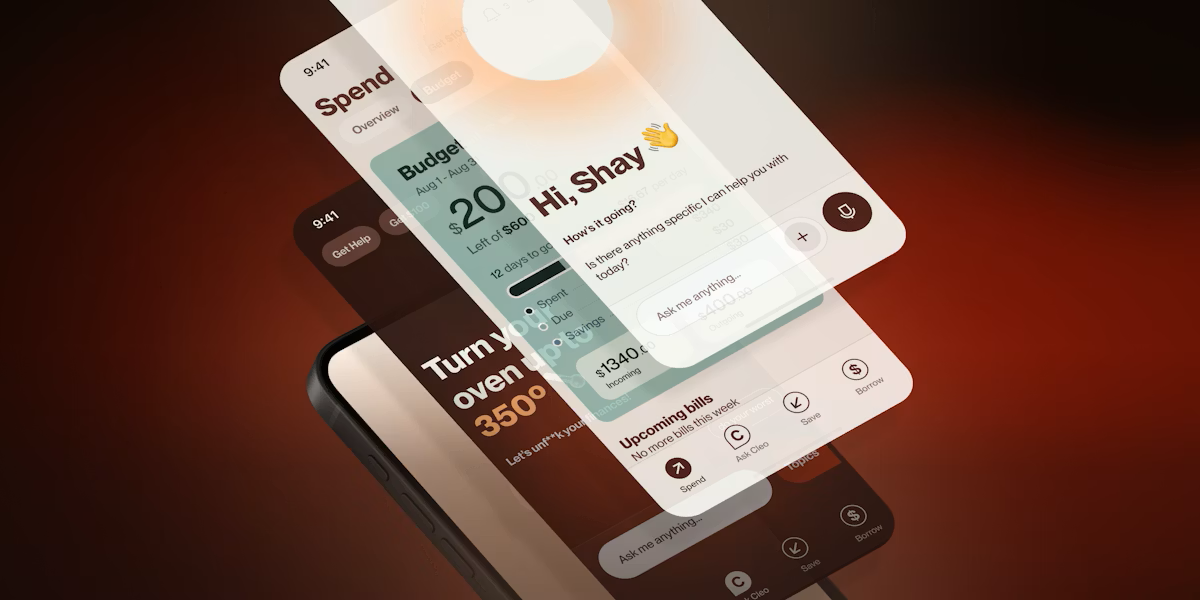By Chris D’Ambrosio
In a competitive job market with up to five generations in the workforce, companies of all sizes must be able to attract and keep great people. That’s where benefits come in. Is your benefits strategy relevant across multiple generations?
This article first appeared on the ADP Spark blog: https://www.adp.com/spark/
Employees looking for a new job, or considering whether to stay with their current employer, indicate that employee benefits offerings are very important in their decision. To learn more on this topic, ADP, in partnership with SourceMedia Research/Employee Benefit News, surveyed more than 5,000 employees of small businesses as well as employees open to new employment in businesses of any size. The research findings offer insights into which benefits have the most impact on employee attraction and retention and which benefits employees are most likely to use.
With the high cost of healthcare, it isn’t surprising that 60% of employees named healthcare as the most important benefit they considered when deciding to accept their current job, far outpacing paid holidays (42%), paid vacation (42%), paid sick days (41%) and access to a retirement savings plan (39%).
Company size can play a role in benefits acceptance.
Employees of companies with less than 10 employees indicate that health insurance (64%), paid vacation/personal days (63%) and paid holidays (55%) would influence them to accept a role at a new company. Among employees of companies with 20 to 49 employees, 74% indicate that health insurance would influence them to accept a role at a new company, followed by paid vacation/personal days (66%) and sick days (62%). So, if you are a company with fewer than 40 employees and make the decision to offer health benefits, you will be meeting a need that is currently unmet for a large number of job seekers, helping you boost your ability to attract and retain top talent.
There are generational differences in what employees want in a benefits package. For instance, only 57% of younger employees—with presumably fewer health issues—rank health insurance as a wanted benefit versus 67% of Generation X and Boomers.
Employees were also asked what benefits they want but don’t have. Consider that almost two-thirds (65%) of employees want bonuses, but only 33% currently receive them. Generational data shows the scope of the issue with spot bonuses:
- Generation Z, 19% have, 42% want
- Millennials, 13% have, 51% want
- Generation X, 9% have, 54% want
- Baby Boomers, 7% have, 54% want
And survey respondents offered insight on the benefits they have versus the benefits they actually use. The top underutilized benefits are life insurance, vision, paid bereavement, disability and paid maternity leave.
This raises an important question. Employers should look to see what benefits are offered and what their utilization rates are, and ask themselves whether it’s worth the cost to continue offering certain benefits if they’re not being taken advantage of. Or they should ask themselves if they need to start efforts to increase awareness about the benefits offered, with the aim of ultimately increasing employee utilization to get the desired retention impact from offering them.
When it comes to company size, it’s not surprising there are differences in the benefits offered to employees. In general, the larger the company the more likely they are to offer health insurance (PPO, HMO, etc.). Consider the following breakouts of company sizes offering health insurance:
Larger companies are also more likely to offer incentive bonuses:
- 12% of companies with 1 to 9 employees offer an incentive bonus
- 15% of companies with 10 to 19 employees offer an incentive bonus
- 20% of companies with 250 to 499 employees offer an incentive bonus
- 23% of companies with 500+ employees an incentive bonus
So, what does this mean for employee benefits professionals? Healthcare remains a highly coveted benefit by most employees and job seekers. But there are also other less-traditional benefits that are worth exploring to attract and retain employees. For example, 25% of Generation Z employees say that student loan repayment assistance would influence their decision to accept a position at a new company
And money talks—bonuses are important to employees so employers may want to consider adding sign-on and spot bonuses to their benefits mix.
=========
Chris D’Ambrosio is Senior Vice President and General Manager for ADP Insurance Services. This article first appeared on the ADP Spark blog https://www.adp.com/spark.
Thanks for reading CPA Practice Advisor!
Subscribe Already registered? Log In
Need more information? Read the FAQs
Tags: Benefits
![benefit_1_.559add12925fc[1]](https://www.cpapracticeadvisor.com/wp-content/uploads/2020/03/benefit_1_.559add12925fc_1_.5e7b880b0551c.png)




